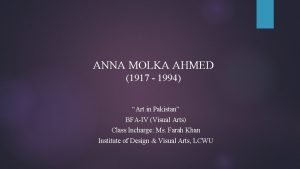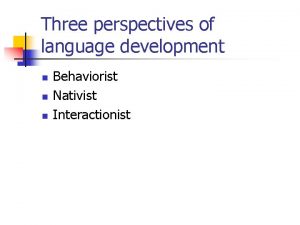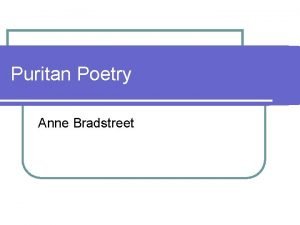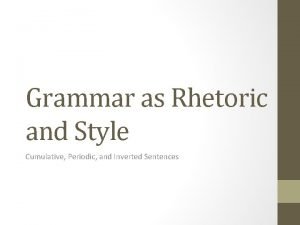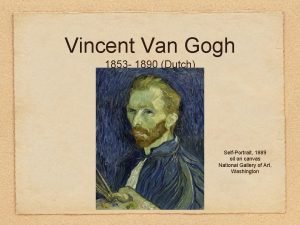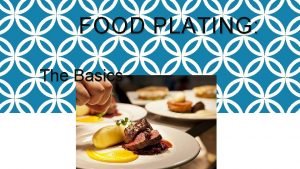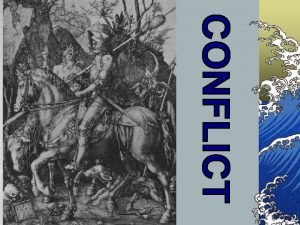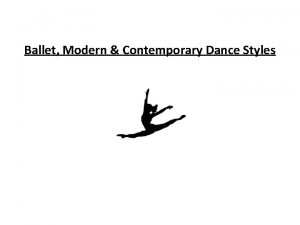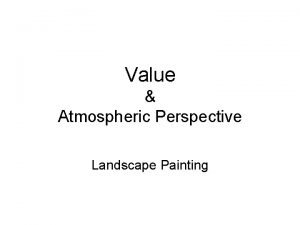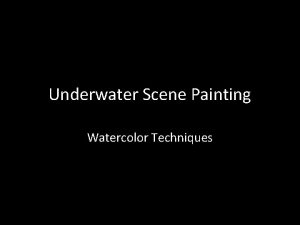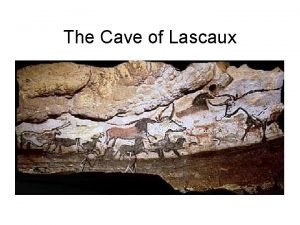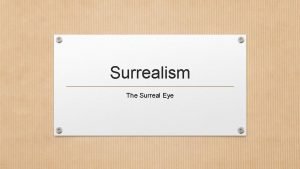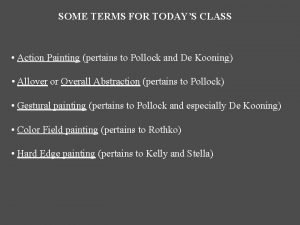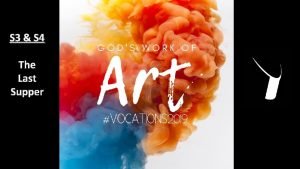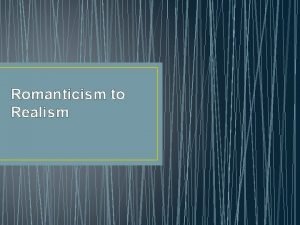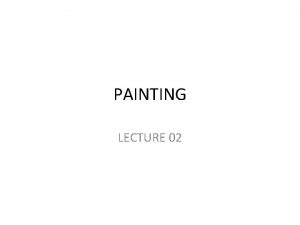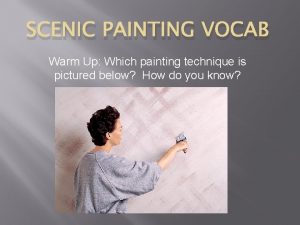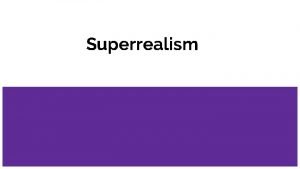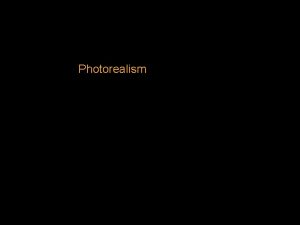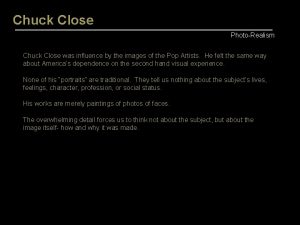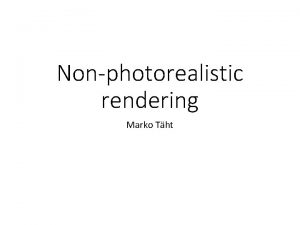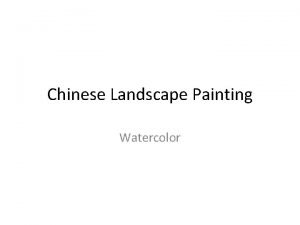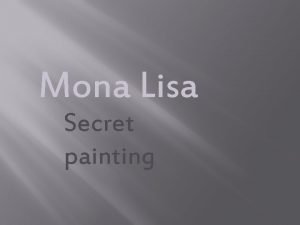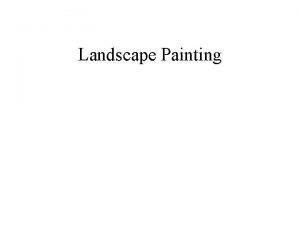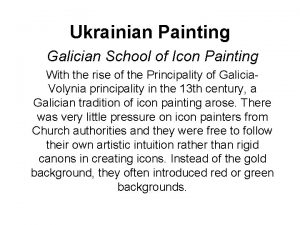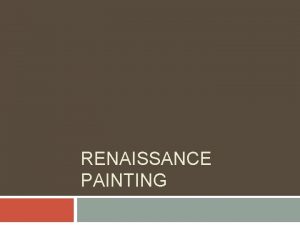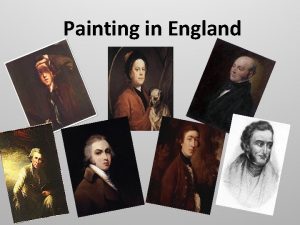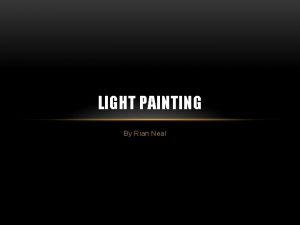Photorealism A style of painting in which an




















- Slides: 20

Photorealism A style of painting in which an image is created in such exact detail that it looks like a photograph; uses everyday subject matter, and often is larger than life.

Chuck Close American artist who paints photo-realist portraits that have blurred the distinction between photography and painting.

Early Life Chuck Close was born on July 5, 1940, in Monroe, Washington. Suffering from severe dyslexia, Close did poorly in school but found comfort in making art. He was also not terribly popular in school, and his problems were furthered by a neuromuscular condition that prevented him from playing sports.

Early Life For the first decade of his life, Close's childhood was more or less stable. But when he was 11, tragedy struck, when his father died and his mother fell ill with breast cancer. Close's own health took a terrible turn around this time as well, when a kidney infection landed him in bed for almost a year.

Through all of this, however, Close deepened his love for painting and art. Close eventually enrolled at the University of Washington, graduating in 1962 and immediately heading east to Yale to study for a Master of Fine Arts from the university's Art and Architecture School.

Early Work His early work was bold, intimate and up-front, replicating the particular details of his selected faces. In addition, his pieces blurred the distinction between painting and photography in a way that had never been done before.

The Process Chuck Close works from polaroid photographs on which he overlays a grid to divide the image into small sections that he scales up and paints inch by inch onto a large canvas.

Early Works In his earlier works, Close was careful to hide the grid upon completion Phil. 1969 Acrylic on canvas, 108 x 84"

All of Chuck Close’s portraits are composed in a similar way: the individual’s expressionless face fills nearly the entire frame, excluding other parts of the body and eliminating background details.

HIS SUBJECT MATTER “My real subjects are not people. I paint portraits of photographs. I paint heads because heads matter to everybody. If you paint a face big enough, it’s hard to ignore. ” Leslie/Watercolor 1. 1986. Watercolor on paper 30. 25 x 22. 25”

Close’s portraits are a means for exploring unsettling aspects of how self identity is always a complex and highly constructed, if not ultimately conflicted fiction.

Paralysis In December of 1988 one of Close’s spinal arteries collapsed which caused him to be paralyzed from the neck down. He was able to regain some leg and arm movement through hours of intense physical therapy.

“ I had to recover enough to paint. There is nothing else I can do. There is nothing else I want to do” Chuck Close

Close found new ways to create art despite his restricted mobility. Just as he mastered previous challenges in both his life and art, Close continues to produce striking images of people that broaden the ways that we view portraiture, contemporary life, and ourselves.

Later Works In his later pieces, the grid has become a visual element of the work itself, and is no longer simply for planning. Alex II. 1989. Oil on canvas. 36 x 30"

The Process Becomes A Part Of The Art Janet, 1992 Oil on canvas 100 x 84 inches (254 x 213. 4 cm) George B. and Jenny R. Mathews Fund, 1992

Viewed from afar, these squares appear as a single, unified image


http: //www. youtube. com/watch? v=mil. XH 433 vs

Compare and Contrast Frank 1969 Acrylic on canvas 108 x 84 in. Self-Portrait -2005 on canvas 102 x 86” 2004 oil
 Chuck close photorealism
Chuck close photorealism Anna molka ahmed
Anna molka ahmed Modified letter
Modified letter Tone formal and informal
Tone formal and informal What is an informal style
What is an informal style Referential style vs. expressive style
Referential style vs. expressive style Inversion in poem
Inversion in poem Cumulative sentence
Cumulative sentence Post impression
Post impression Which plating style is not a classic arrangement
Which plating style is not a classic arrangement Expressed struggle
Expressed struggle 5 ballet foot positions
5 ballet foot positions Atmospheric perspective landscape
Atmospheric perspective landscape How to draw sand underwater
How to draw sand underwater Cave symbols
Cave symbols La solidaridad painting
La solidaridad painting Eye surrealism
Eye surrealism Similar
Similar Meaning of last supper
Meaning of last supper Gleaners painting
Gleaners painting Romanticism
Romanticism

